This page contains affiliate links. We may earn money or products from the companies mentioned in this post through our independently chosen links, which earn us a commission. Learn More
Teaching your dog to eliminate outside provides comfort for both your family and your pet, and it will help you bond easier. With no extra cleaning and less stress generated by your puppy’s “mistakes”, you’ll have more time to have fun and to discover the benefits of having a pet.
Any dog can learn how to maintain a clean house by eliminating outside, if you know how to potty train a puppy correctly.
This article is the Ultimate Guide for Potty Training Puppies and presents all you have to know about the FASTEST METHOD to toilet train your dog.
The main trick is to reward your puppy every time she eliminates in the right place.
Whenever she eliminates outside her toilet area, you’ve missed a chance for a potty training session.
Contents & Quick Navigation
Definition of Potty Training
You can call it house training, housebreaking, potty training, or you can use a term of your own. Basically, it’s just teaching your dog to control her bladder when she’s inside and eliminate in a specific area.
The Most Effective Ways to Potty Train a Puppy
According to Dr. Mary Burch, Ph.D., director of the AKC’s Canine Good Citizen and S.T.A.R. Puppy programs, you can use three methods for potty training a dog:
- Crate training;
- Frequent trips outside;
- Paper training.
The success of any of these methods depends on the same four things. No matter what road you decide to take, you need to pay attention to these four details:
- Provide your dog with the correct diet. Healthy meals help your dog’s digestion, so your dog will eliminate regularly.
- Maintain a regular schedule for feeding and going out. Dogs learn faster if you keep an organized schedule. Furthermore, regular activities will help you prevent unpleasant incidents.
- Encourage your dog to exercise. Through exercise, your dog stays healthy and burns off the extra energy that makes her agitated. A calm puppy responds better to your commands.
- Use positive reinforcement by rewarding your dog every time she eliminates in the correct area. So your pup gets the idea that “Potty in right place” = “Treat”.
Before you start dog potty training, choose an easy to access toilet for your pet. If you live in an apartment on the third floor, for example, you’d better organize a corner inside your bathroom or a pen as your dog’s primary toilet area.
Things are easier when you live in a house with fast outdoor access because you can designate your dog’s toilet area somewhere close to your home, but still outside the house. You’ll need a pen anyway, but it’s always better when your dog learns from the beginning that her toilet area is not inside.
Why Crate Is One of the Best Potty Training Tools
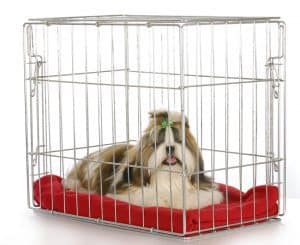
Crate training is the best way to potty train a puppy because it uses the dog’s “den instinct” as a starting point. Normally, dogs don’t soil their dens and most puppies learn this right from their first days.
When they are very young, they eliminate in the sleeping area and their mother always cleans both them and the place where they live, so puppies learn to sleep in a clean spot.
Growing, they start imitating their mother’s behavior and go outside the den, so it’s in dogs’ nature to learn at an early age (2-4 months) not to eliminate where they sleep.
By confining your dog and by providing her frequent access to an external area for eliminating, you will satisfy your puppy’s natural need for home and safety and help her maintain her “den instinct”. This generates the desire of keeping the sleeping area clean.
The confined area can be an exercise pen, a large crate, a restricted area in the bathroom, or any other space that works well for you.
Keeping the dog confined when you can’t watch her over is not cruel, as some people might think. In fact, teaching a dog to stay inside the crate is helpful, especially when you travel and when she needs to remain locked up for safety reasons.
For the method to work, you must pay attention to your puppy’s needs and give her access to an area where she can eliminate every time she scratches and whines.
If you miss these signals, the dog will understand it’s ok to soil the crate and the housebreaking your puppy will become longer and more difficult.
How to Choose a Crate?
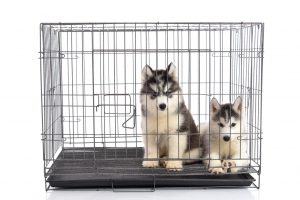
A crate has the right dimensions if, once inside, your dog can turn around, lay down and stand up without difficulty. However, you don’t want it to be too large, because this will allow the dog to set herself a space for sleeping and one for soiling.
She’ll eliminate in one of the corners and then she’ll get into the bad habit of spreading the dirt. If your dog learns to live in a dirty home, she’ll have no problem soiling your entire house.
Invest in a quality cage that can withstand all your puppy’s physical changes. So, get one large enough to fit your dog when she grows up, and ask for a divider or panel to delimit the living area, to make it fit your puppy’s current small dimensions.
Get a crate that you can clean easily, as you’ll have to wash it and sanitize it often. Wire crates, for example, are reliable, allow you to have a full view of the dog and some models can even be folded, so they’re also easy to transport.
House Training When You ARE Home
When housebreaking a puppy, you should watch her as long as possible and take her to the designated toilet area regularly. She’ll learn faster if you reward her more often, so spend a lot of time with your dog and take her out whenever she shows signs that she’s ready to eliminate.
Some typical signs that your dog needs to go out are:
- Sniffing around
- Squatting
- Circling
- Barking
- Restlessness
- Whining inside the crate
- Going close to the door.
However, all dogs have different signals, especially when it comes to number 1, so you should observe her carefully to learn her habits and be able to step in at the right time.
After going out, when she has an empty bladder, you can quit on the crate and leave her outside the confined area. However, you should continuously watch over her to catch the next moment she needs to go out, so make sure your dog is always close to you.
Use the leash to have permanent control over the places your puppy explores. If you have your dog literally attached to you, she won’t have a chance to hide and eliminate without you noticing it.
Keep the leash when you’re in the yard, too. Puppies need attention all the time, especially if you want to take advantage of any opportunity for housetraining.
If you can’t keep your eyes on her for any reason, don’t leave the puppy by herself outside her confined area, even if you are at home. Until she’s potty trained, you will either need to watch your puppy all the time or keep her in the pen.
Keep the puppy away from rugs or carpets. These objects are inviting for her, because they are soft and absorbent, perfect to pee on.
Why to Keep a Schedule
A regular schedule, based on your puppy’s habits, will help her learn faster. Take your puppy out periodically, every 30-45 minutes at an early age, and moving gradually to every two hours as she grows.
Use the following list of specific moments when your puppy normally eliminates to organize your schedule better. Take her out after each of these activities and, as always, praise and reward her for eliminating in the correct area.
- When she wakes up: first thing in the morning (before feeding) and after her naps during the day
- After eating. Some dogs eliminate right after eating, while others need up to 30 minutes before they’re ready to poop.
- After drinking. You can control your dog’s water intake by periodically checking her bowl.
- Before going to bed at night.
- After she has spent some time in the crate.
- When she’s finished playing and exercising.
Regular meals will help you potty train your puppy faster because they generate fixed hours for going out. So, give her food at the same hour, in the same location every day and, unless a veterinarian has advised you to do so, never free-feed. Try not to feed too late in the evening because it causes defecating during the night, which is no fun for you or your puppy.
Always provide your puppy with the best food, whether it’s kibbles or homemade products. Examine stools periodically and, if they’re loose or stinky, talk to your vet and change the puppy’s diet.
Avoid feeding any salty foods. They increase water intake, which means your puppy will urinate more often and you won’t be able to respect the schedule.
Overfeeding makes puppy potty training more difficult. Specialists advise dividing the food into three daily meals for young dogs because their digestive systems are not mature enough to handle all food in one single meal.
Before going to bed, you need to take your puppy to her primary toilet area. Praise and reward her after eliminating, then put her in her crate and go to bed.
During the night, if your dog whines because she needs to go out, you must release her from the crate and take her to the toilet.
Verbal Cues
Potty training a puppy works better if you associate a verbal cue with the moment when the puppy should go out. You can choose any word, such as “Outside”, “Do It”, or “Potty”, as long as all family members use the same command. It’s important to remember that this verbal signal serves for one activity only.
If you take your puppy out for any reason, other than eliminating, you should use a different verbal cue, to avoid confusion.
Using words will encourage your puppy associate your command with eliminating. This is important because it will make her to come to you when she wants to go out, instead of barking or waiting in front of your door to be let outside.
Paper Training or Passive House Training When You’re NOT Home
There comes a time when you have to leave your puppy home alone and you need a reliable method to continue potty training when you’re not around.
You can’t leave your small dog locked up for more than four-five hours a day. So, if you spend most time outside, you should choose an adult dog that can wait for longer periods before eliminating, or find a person to walk your puppy regularly.

There’s also the third option of training your puppy to eliminate in a fixed place indoors, but it’s less recommended, mostly because it encourages the puppy to eliminate inside. Furthermore, a very small percentage of dogs are able to go through this training process with good results. So, if you choose to use this path, you should know there’s a high possibility your puppy never learns to keep a clean house and you’ll have to teach her, at an older age, to eliminate outside. This means more work and additional stress for both you and your puppy.
Paper training generally works with very young dogs, whose breeders have used paper to start basic housebreaking training. So, unless you have some clues your puppy meets these requirements, it’s better to quit on the idea and hire a dog sitter to help you with outside training.
However, if you have no choice, then prepare yourself with patience and papers, and praise her every time she makes progress. Reinforcing is essential, and so are a rigid schedule and your ability to remain focused on your puppy’s needs.
Any mistake you make can confuse your puppy and she’ll end by soiling your home more and more often.
If you’re paper training your puppy, then you should have a dog pen where to confine her during training sessions. The pen is large enough to have separated areas for sleeping, playing and eliminating, which is exactly what you’re looking for if you plan to teach your puppy to eliminate in a specific angle.
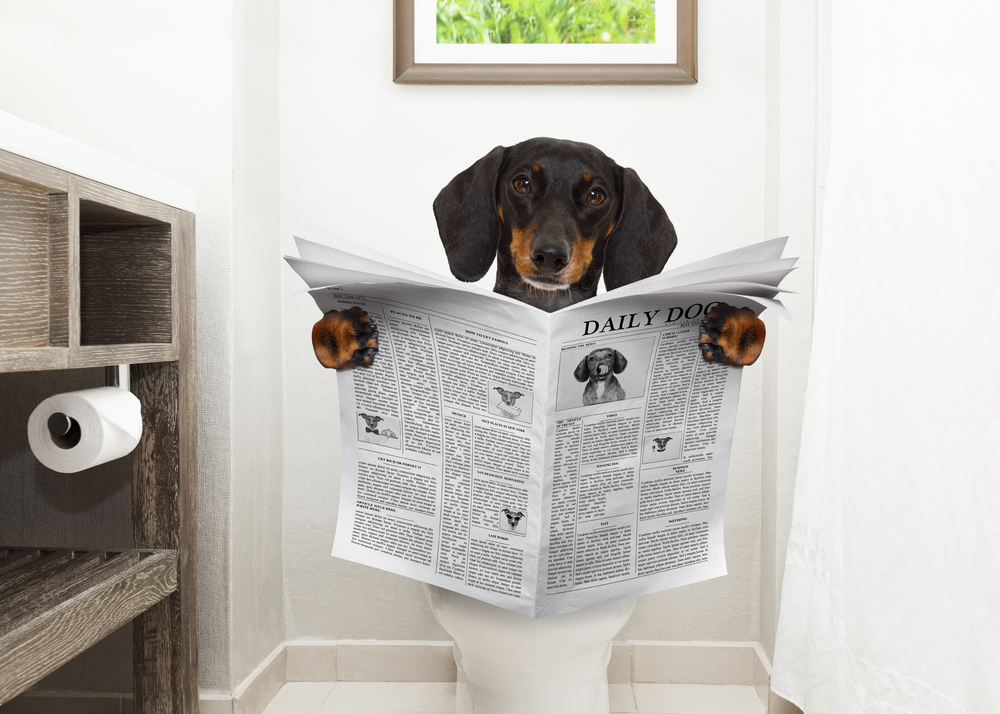
Step 1: Prepare your dog’s confined area by covering the entire pen’s floor with papers.
Don’t worry if, at the beginning, she goes everywhere without rules. This is normal behavior, and so is playing with the dirty papers or chewing on them. Remove all used papers, clean the surface and cover it back with a few layers of fresh paper.
Step 2: Reduce the papered surface.
With time, the puppy will always use the same place to eliminate. When all other papers are clean, gradually reduce the covered area, starting from the opposite corner to the dirty one. If you move too fast, your dog will make mistakes. If that happens, you must go back to the previous step, when the papered area was larger. Remember that your dog needs to have separate areas for sleeping, playing and eliminating.
Step 3: Move the papers into the location you choose.
Once your dog has learned to eliminate in the same spot, modify the papers’ position by just a few inches every day, as sudden changes could provoke a negative response that will force you to have to start the training over.
Step 4: Move the papers outside.
Paper training isn’t the best way to potty train a puppy, but it proves itself helpful sometimes. Once the puppy has developed the habit of eliminating on paper, move the papers closer to the door and add some outside the house too. As the puppy grows, she will learn to eliminate outside and will quit using the papers indoors.
You can substitute papers with treated or wee-wee pads. They have a particular smell that shows the puppy where the right place to eliminate is.
Some specialists recommend using a sod box instead of papers, to avoid the unpleasant situation where your puppy learns to soil any newspaper lying around your home. You can buy one from the pet store or do it yourself by placing sod in a container.
How to Choose an Exercise Pen?
If you prefer to substitute the crate with an exercise pen, then you should be sure it’s tall enough to prevent your dog from jumping out of it.
Place the pen in the area where you spend most of your time, so that you can watch over your puppy more easily. Organize the spaces inside with a corner for sleeping, one for playing, a separate spot for water, and a specific toilet area, not very close to the entrance, covered with paper or tarp. Toys should stay as far as possible from the spot chosen for eliminating.
Watch your dog without staring at her and, after she has used the correct toilet area, reward her and release her from the pen. This way, your puppy learns that “Potty in the correct area” = “Treat” = “Freedom”.
When to Begin House Training a Puppy
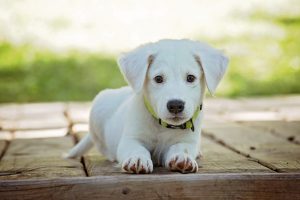 The best age for potty training your puppy is between 12 and 16 weeks, when she starts gaining control over her bladder and bowel. However, experts say that training can start at earlier ages, as long as you carry your puppy to the designated toilet area yourself.
The best age for potty training your puppy is between 12 and 16 weeks, when she starts gaining control over her bladder and bowel. However, experts say that training can start at earlier ages, as long as you carry your puppy to the designated toilet area yourself.
After the age of 12 weeks, puppy housebreaking can take longer, especially if your puppy has already developed some bad habits, such as eliminating inside her crate or even eating the waste.
How Long Does It Take to Potty Train a Puppy
It depends on how much time you spend with her; the more time you dedicate to housebreaking your puppy, the faster she will learn what you expect from her. Generally, housebreaking a dog takes between 4 and 6 months, but you can’t talk about a completely trained dog before the age of 6 months. So, no matter how well she’s doing, accidents can happen at any time.
Some factors that can influence potty training, besides your efforts, are:
- Breed and size. Smaller breeds need to go out more often because they have a high metabolism and small bladders.
- Previous behavior. Correcting inappropriate behavior requires more work than starting training from scratch.
- Age. Young puppies develop differently and some of them learn great manners from their first days, while others need to grow a little before getting things right.
- Training background. It’s easier to work with dogs whose breeders have already started some basic training.
How Often Do Puppies Have to Potty
As previously stated, a puppy needs to go out every 30-45 minutes, unless she’s sleeping. Experts say that the time a puppy can control her bladder is related to her age: a 2-month puppy can hold for 2 hours, a 4-month should be able to resist as long as 4 hours, and so on. When they sleep, dogs can go without urinating for as long as 7 hours.
However, this is just a guideline, as each puppy is unique and has different timings. You have to observe your dog’s rhythm in order to adapt your training methods to her individual needs.
If you can’t give your dog a walk outside after about 6-7 hours, it’s better if you ask a family member or a dog walker for help. Puppies need to exercise and socialize every day.
Further reading
Giving Treats
Rewarding good behavior is the most important thing in dog potty training. So you should reward your puppy every time she eliminates in the correct area, indoor or outdoor. Adapt your praise to your dog’s preferences: some puppies prefer loud celebrations, while for others, your silent approval works just as well.
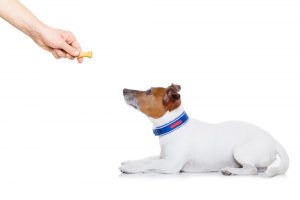
Use something your dog likes to eat as a reward to motivate her and help her learn faster. A treat can be a pea-size piece of her favorite homemade food or any of the special dog snacks you can find at the pet store, as long as it makes her happy and leaves her craving for more. However, you must pay attention to quantities and count all treats when you consider your puppy’s daily food intake, to prevent obesity.
The reward must arrive immediately after eliminating because dogs don’t have the ability to associate things that are separated in time. So, if you wait until you’re back inside to offer the treat, your puppy won’t understand what she’s being rewarded for. Keep treats somewhere close to the toilet area, to be sure that you can reward the puppy every time she eliminates.
Never rush your puppy when you’re taking her to eliminate and avoid using a loud tone for the verbal cue. These cause stress and can distract her from what she has to do, so she’ll stop eliminating to focus on you until she’s back inside.
What to Do When Accidents Happen
Accidents inside the house are normal when you’re potty training your puppy, especially if your dog is younger than 6 months.
The good news is you can minimize damage using some of these tricks:
- If you catch your puppy in the act, interrupt her immediately. You can make a noise, such as saying “OUTSIDE” or “WRONG”, but pay attention not to scare her. Then carry your dog to the designated toilet area and allow her to finish. Always praise and reward her after she’s eliminated.
- Don’t punish your puppy for accidents, whether you catch her in the act or not. Remember, dogs don’t associate things that have happened in different moments in time, so punishment for something that occurred in the past is completely useless. Furthermore, scolding your puppy could make her afraid of you or of eliminating when you’re around. This will considerably increase the training period. Physical corrections, the act of rubbing the puppy’s nose in the dirt, or leaving your puppy alone as punishment almost always bring bad results. In fact, punishments can affect your relationship with your dog throughout her entire life.
- Clean the dirty areas extremely well. A zone that smells of urine or feces is going to be soiled again, as the scent signals to your puppy that it’s OK to pee there. As previously stated, you can place the dirty rag you used to clean messes within the correct toilet area, to help your puppy identify it easier. For cleaning, use some specific products, such as Nature’s Miracle, or any other similar enzymatic cleaner, made specifically for this task. Use the producer’s instructions to be sure you obtain a perfectly clean spot. Just because you don’t notice the smell of urine, doesn’t mean your puppy won’t. Avoid cleaning substances that contain ammonia, because their scent is similar to urine and sends the wrong signals to your puppy.
PATIENCE and DEDICATION are keywords when it comes to reducing the number of accidents. Supervise your puppy and keep her in a confined area to give her fewer opportunities to soil around the house. And, whenever she goes in the wrong place, clean up as quickly as possible, without making too big a deal out of it.
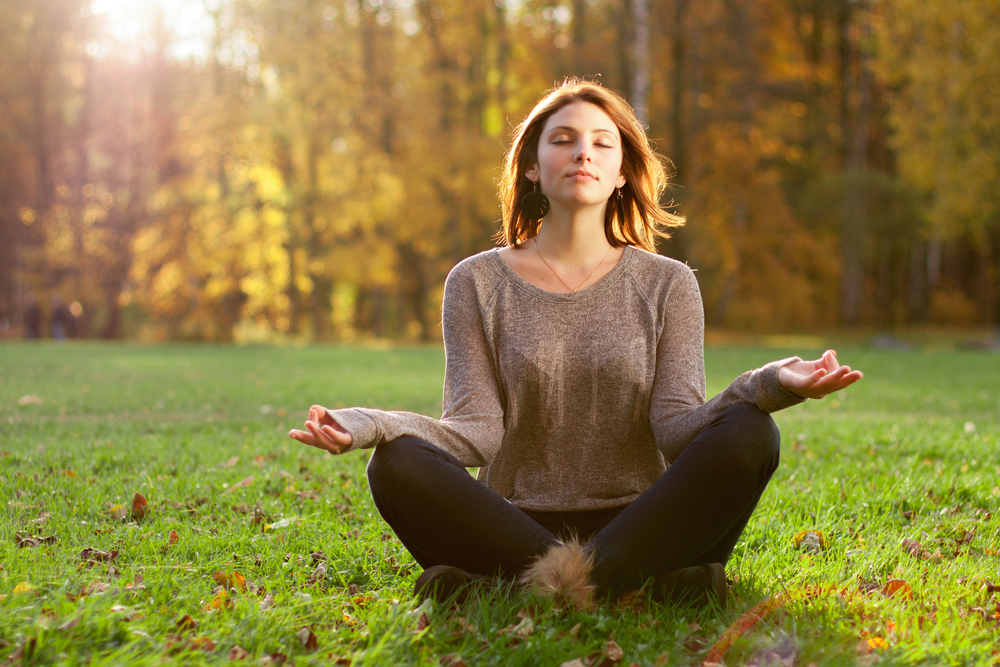
What to Do When Your Dog Is Soiling Her Crate
Many dogs who have lived in pet stores or shelters tend to eliminate inside their crates, mostly because they have lived in a confined area for long periods, without access to a separate toilet.
When you’re potty training this type of puppy, you’ll need to adapt the method, using the following steps:
Step 1: Try to evaluate how long your puppy can control her bladder and bowel when she’s outside the crate. This will help you understand better how to toilet train your dog using the right potty training program.
Step 2: Organize a consistent feeding schedule, paying attention to the quality of the food you’re providing.
Step 3: Give her access to the toilet area frequently, using a rigorous timetable. Take into consideration all indications from the subtopic “Why to Keep a Schedule”.
Step 4: If you can’t respect the timetable because you work outside your home, hire a dog walker or find someone you trust to take your puppy out according to schedule.
Step 5: After every accident, clean the crate and any other soiled area until there is no odor left.
What to Do If Your Pup Is Not Able to Hold on Until She’s In the Toilet Area
If your puppy can’t hold on as long as you need to arrive at the toilet, you’ll have a missed training opportunity. Whereas making it on time gives you the chance to reward and praise your puppy.
To avoid such situations, some dog trainers advise dog owners to carry their puppies to the toilet. By picking your puppy up in your arms and taking her to the toilet area in time, you can avoid accidents caused by the fact that the puppy is too young to control her bladder well enough.
You can use this technique every time your puppy needs to pee. It’s not recommended when she’s pooping because puppies don’t have the ability to interrupt this process and you’ll end up making a mess all over the place.
This method is helpful mostly when you’re training small puppies, under the age of 3 months. However, if your puppy is too large and you can’t pick her up, use a leash and hurry her to the toilet area without any stops.
If the toilet area is outside, make sure you use a collar and leash when going out. Never let your puppy lose outside the house unless your yard is closed and pet-proofed.
Spontaneous or Submissive Urination
Sometimes, puppies need to go out when they are over-excited about something. It’s what veterinarians call submissive or excitement urination. It generally happens in “special” moments, such as when you two meet after your long absence when your puppy comes close to another dog, or when she is afraid of something.
You shouldn’t punish your puppy when it occurs, because she doesn’t have any control over her bladder during such moments, and punishment will only make things worse. So, if your puppy urinates spontaneously when you arrive, it’s better if you first take her out to eliminate and then greet her.
Generally, this problem disappears with time, when the puppy is between 4 and 7 months.
Further Reading
Setbacks
They generally occur when you quit puppy potty training too soon. Even if your dog seems completely trained, you need to wait before letting her free and unwatched. So leaving her home alone and free to explore the entire house is out of the question.
You should stick to the schedule for some time, as too much freedom can make your puppy go back to her old habits.
Main Rules When Potty Training a Puppy (Summary)
1. Keep a regular schedule for all your puppy’s activities:
- Feeding. Generally, what goes in regularly will come out at consistent times. This will help your dog learn faster and will allow you to have a more flexible schedule.
- Going outside. If you can’t remember her schedule easily, a diary is a practical tool to keep track of your puppy’s next time to go out.
- Removing the dog’s water bowl two hours before bedtime. This can reduce the chances of your puppy needing to go out during the night.
2. Be consistent when you interact with your puppy
- Always reward and praise your puppy for going in the correct place; special treats work best.
- Use the same verbal cue every time your puppy has eliminated, to avoid confusion.
- Maintain a cheery voice when you encourage your dog. If you can’t control your tone, quit on the verbal cue.
3. When you keep your puppy locked up for a long time, the first thing you should do when you get back to her is taking her outside to eliminate.
Common errors
1. You expect too much from your puppy from the beginning
This includes:
- hoping your puppy will go through the night without eliminating;
- waiting for her to ask to go out instead of providing access to the toilet area regularly;
- keeping the puppy in a confined area for too long
2. You punish your puppy
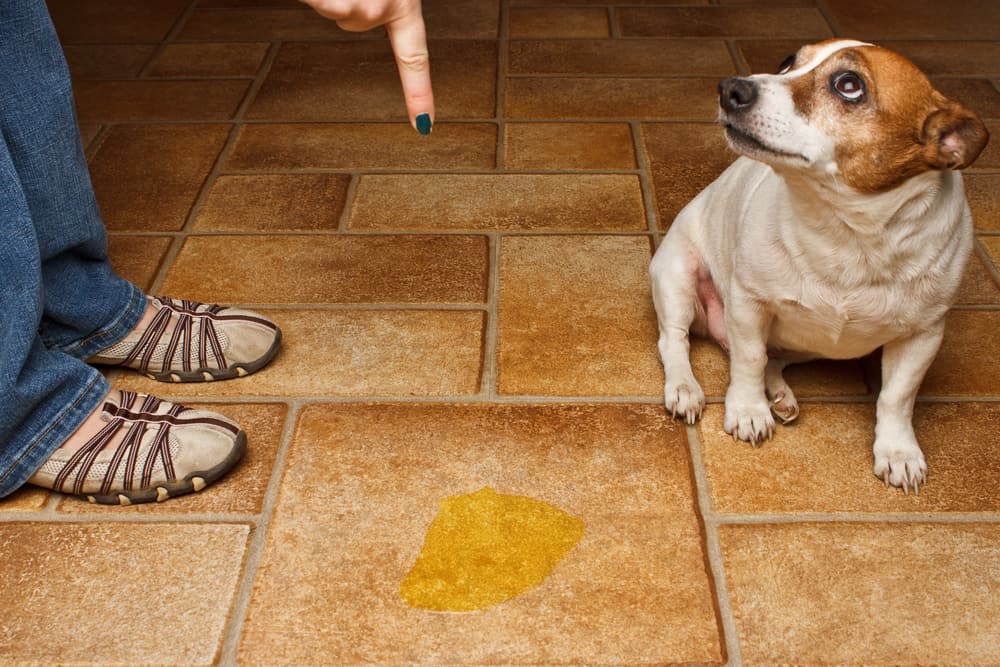
It has negative consequences, such as making training longer and more difficult. Your puppy will be scared of you and of eliminating in your presence, which is totally unacceptable when potty training dogs, as you need to be there when she eliminates to reward her.
3. You don’t pay attention to your pup’s diet
Too much food or bad nutrition will cause your dog to go irregularly and prevent you from keeping a consistent schedule. So, try to avoid:
- Overfeeding,
- Free feeding,
- Inappropriate diet.
4. You leave your puppy on her own
This is wrong mostly because:
- A puppy that can go outside whenever she wants won’t learn to eliminate outdoors because you won’t be there to reward her good behavior.
- If the yard is always available, it will be the puppy’s playground rather than the place where she should eliminate.
- When the weather is cold you have to limit her access outside and she’ll eliminate without rules inside.


4 replies on “Potty Training Tips for Puppies & Dogs (Complete How-To Guide)”
Wonderful, this is a really thorough guide. I like that you mentioned, if you are going to make a noise when they make an accident, it shouldn’t scare them. I used to frighten Matilda when I said “no,” and I paid for it with months of her being afraid to go in front of me.
Lindsay, thanks for the feedback and sharing your own experience 🙂 Yea! Your should be very careful interacting with your dog, especially when she is peeing 🙂
Specialists prescribe keeping the puppy to a characterized space, regardless of whether that implies in a carton, in a room, or on a rope. As your puppy discovers that he needs to go outside to do his business, you can bit by bit give him more flexibility to wander about the house.
When you begin to house prepare, take after these means:
1. Keep the puppy on a consistent bolstering calendar and take away his nourishment between suppers.
2. Take puppy out to take out before anything else and after that once at regular intervals to 60 minutes. Likewise, dependably take him outside after suppers or when he wakes from a snooze. Ensure he goes out last thing during the evening and before he’s took off alone.
3. Take puppy to a similar detect each opportunity to do his business. His fragrance will incite him to go.
4. Remain with him outside, in any event until he’s home prepared.
5. At the point when your puppy disposes of outside, laud him or give him a treat. A stroll around the area is a pleasant reward.
I think that crates are an important puppy housetraining tool that can make the training process easier.